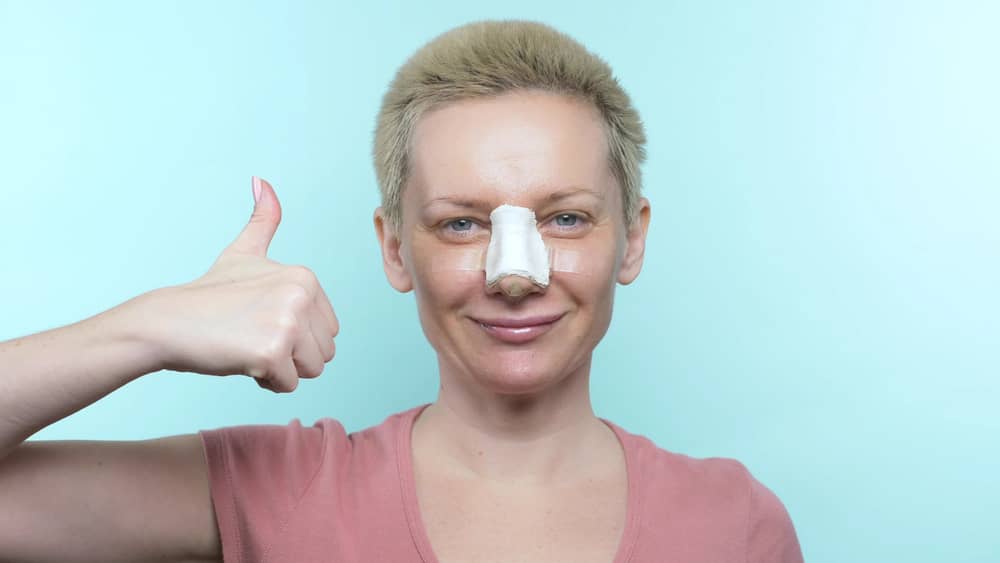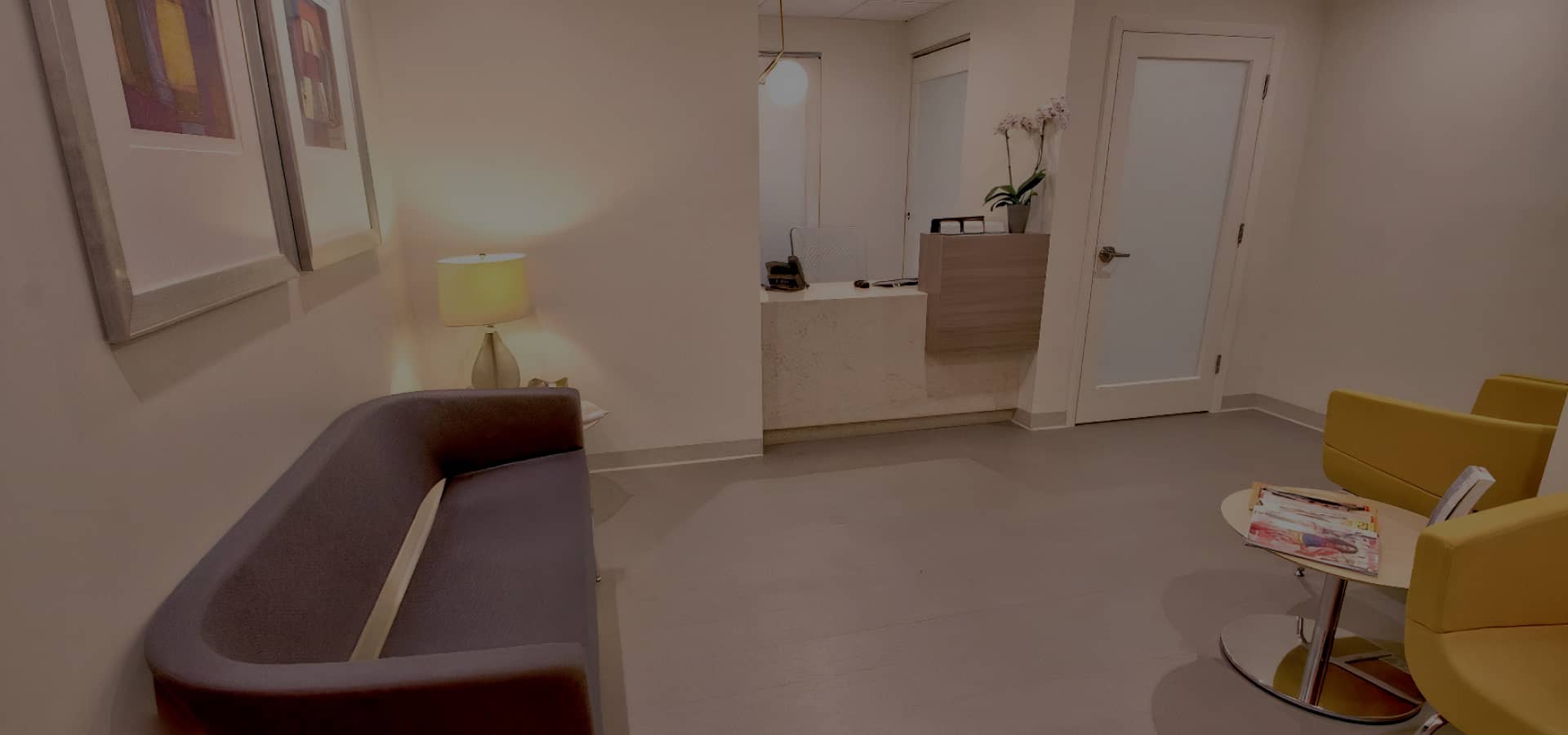Rhinoplasty, AKA a “nose job,” has been among the most popular plastic surgery procedures worldwide for many years running. It was the most frequently performed plastic surgery in 2019, according to statistics from the American Society of Plastic Surgeons.
It’s easy to see why, as rhinoplasty reshapes one of the most prominent facial features: the nose. People choose rhinoplasty because they want a bigger nose, a smaller nose, or a nose that’s less crooked, among other reasons. The surgery can also help improve nasal function.
If you’re considering a nose job, it’s important to understand what the procedure can and can’t fix so you can decide if it’s right for you.
Rhinoplasty for Breathing Issues
People who have difficulty breathing through their noses usually have at least one of several different nasal issues. In some cases, breathing troubles are caused by chronic sinus infections. In others, the breathing difficulty is due to something blocking the nasal passages, such as a deviated septum.
Nasal valve collapse can also block the airway, making breathing difficult. A nasal valve collapse (NVC) typically occurs at the narrowest point of the airway. When a patient with NVC inhales, the valve falls inward, making it difficult for air to pass through.
NVC can be caused by trauma to the nose or by a previous nasal surgery. Rhinoplasty can help to correct NVC by adding a cartilage graft to the interior of the nose, repairing the valve and improving the patient’s breathing.
If you think you have NVC and are curious about how nasal surgery could help you breathe more easily, it’s important to choose a plastic surgeon who specializes in rhinoplasty, has extensive experience addressing breathing problems, and possesses a thorough understanding of nasal anatomy.
While septoplasty is often the surgery of choice for correcting a deviated septum, some patients can benefit from a combined septorhinoplasty. The septoplasty straightens the septum while the rhinoplasty can address any other nasal concerns a patient might have.
The goal of rhinoplasty for breathing problems is primarily to improve the function of the nose. During a functional rhinoplasty consultation, the surgeon takes a thorough nasal breathing history and performs an examination of the nose. If the patient has a pre-existing complaint of obstructed nasal breathing, the surgeon attempts to diagnose and treat the cause of the obstruction.
Rhinoplasty to Straighten a Crooked Nose
Crooked noses are pretty common. In fact, it’s thought that up to 80% of the population has an asymmetrical nose to some degree. Some people aren’t bothered by their nose’s asymmetry while others feel the crookedness is extremely noticeable.
In some instances, asymmetry can interfere with the function of the nose. For example, many people with a deviated septum also have a nose that’s somewhat crooked.
Other factors that can cause a nose to be dramatically crooked include birth defects, tumors, and injuries. Some people can end up with a crooked nose following an unsuccessful nasal surgery.
The surgical correction of a crooked nose is actually one of the more challenging adjustments to make in both primary and revision rhinoplasty surgery. There is very little margin for error when trying to correct a crooked nose—every millimeter counts.
When straightening a crooked nose, the surgeon is attempting to set a three-dimensional structure in the center of the face at the midline. Dr. Anthony Bared feels that a successful surgery “starts” with the pre-operative assessment. During the initial consultation, he takes a detailed medical history of the patient and performs a physical examination.
He’ll ask patients about any breathing difficulties and discuss the reasons they might want a rhinoplasty. Then, Dr. Bared will perform a nasal examination which includes an evaluation of the septum and the nasal valve.
One way that Dr. Bared performs this exam is by using a small scope, or camera, to get a clear view of the septum. He’ll also pay close attention to the nasal valve, as it’s an area where maximum airflow restriction takes place.
The nasal valve is bordered by the septum, the nasal sidewall, and the inferior turbinate. Examination of each of these areas is critical. Otherwise, a component of the nasal airway may not be addressed during surgery.
Dr. Bared will also take photos of the nose from multiple angles, including close-up photos under proper lighting, to get a clear idea of how to surgically correct it.
Typically, a crooked nose is straightened through the use of cartilage grafts. The grafts are often harvested from the patient’s septum.
Rhinoplasty to Remove Dorsal Humps and Bumps
Some people have a hump or bump on the dorsum or bridge of their nose that causes them significant embarrassment or makes them feel self-conscious. The good news is that dorsal humps are typically just a cosmetic concern and don’t often affect nasal function. Most dorsal humps can be surgically corrected with relative ease by a competent surgeon.
Several factors can contribute to the formation of a hump on the dorsum. In some cases, a hump forms as a result of a person’s genes. If a person comes from a family where everyone has a hump on their nose, they are likely to have one too, due to their nasal structure.
An injury can also cause a hump to form on the dorsum. For example, if a boxer gets punched in the nose during a fight, the nose might not heal evenly, causing a bump to form on the nasal bridge.
A person can also develop a hump on their nose if they regularly pick at their nose or otherwise increase their risk of developing a nasal infection.
Understanding the anatomy of the dorsum allows for more predictable results during rhinoplasty surgery. Cartilage makes up the majority of the structure of the nose and there’s more to reducing a hump than “shaving it off.”
Successful hump reduction requires a surgeon to know how much of the hump is composed of bone and how much is cartilage. A surgeon also needs to assess the thickness of the patient’s skin.
Nasal skin thickness varies even within the nose itself. It’s the thinnest where the cartilage meets the bones at the rhinion and thickest in the supratip area and radix. A surgeon needs both anatomical expertise and skill to successfully reduce a nasal hump.
What Else Can Rhinoplasty Correct?
Along with straightening an asymmetrical nose, reducing humps, and fixing breathing problems, rhinoplasty can correct the following concerns:
- Flared or wide nostrils
- Facial imbalance
- Droopy nasal tip
- Hooked nasal tip
- Upturned nasal tip
- Overprojected nasal tip
- Depressions in the bridge of the nose
- Nasal Lobule Correction
A plastic surgeon can tell you if your expectations for rhinoplasty are realistic. A consultation can give you clarity about what is possible with this versatile surgery.
When to Consider Rhinoplasty
If you have any of the above concerns, rhinoplasty might be the right option for you. But there’s more to scheduling nasal surgery than simply feeling dissatisfied with your nose. You need to make sure the surgery is right for you first.
Often, people consider nasal surgery when they’ve exhausted other options. If you’ve tried everything and you still have trouble breathing, surgery might be necessary.
It’s important to be in good overall health before you schedule nasal surgery. You must also understand what the surgery can and can’t do for you. A consultation with a board-certified facial plastic surgeon who specializes in rhinoplasty can help you better understand your candidacy.
Schedule Your Rhinoplasty Consultation in Miami Today
Whether you want to fix a crooked nose, get rid of a hump, or otherwise change the way your nose looks or functions, rhinoplasty might be right for you. To learn more about how the surgery could improve your nose, call 305-666-1774 to schedule a consultation with Dr. Anthony Bared in Miami, FL, today.

